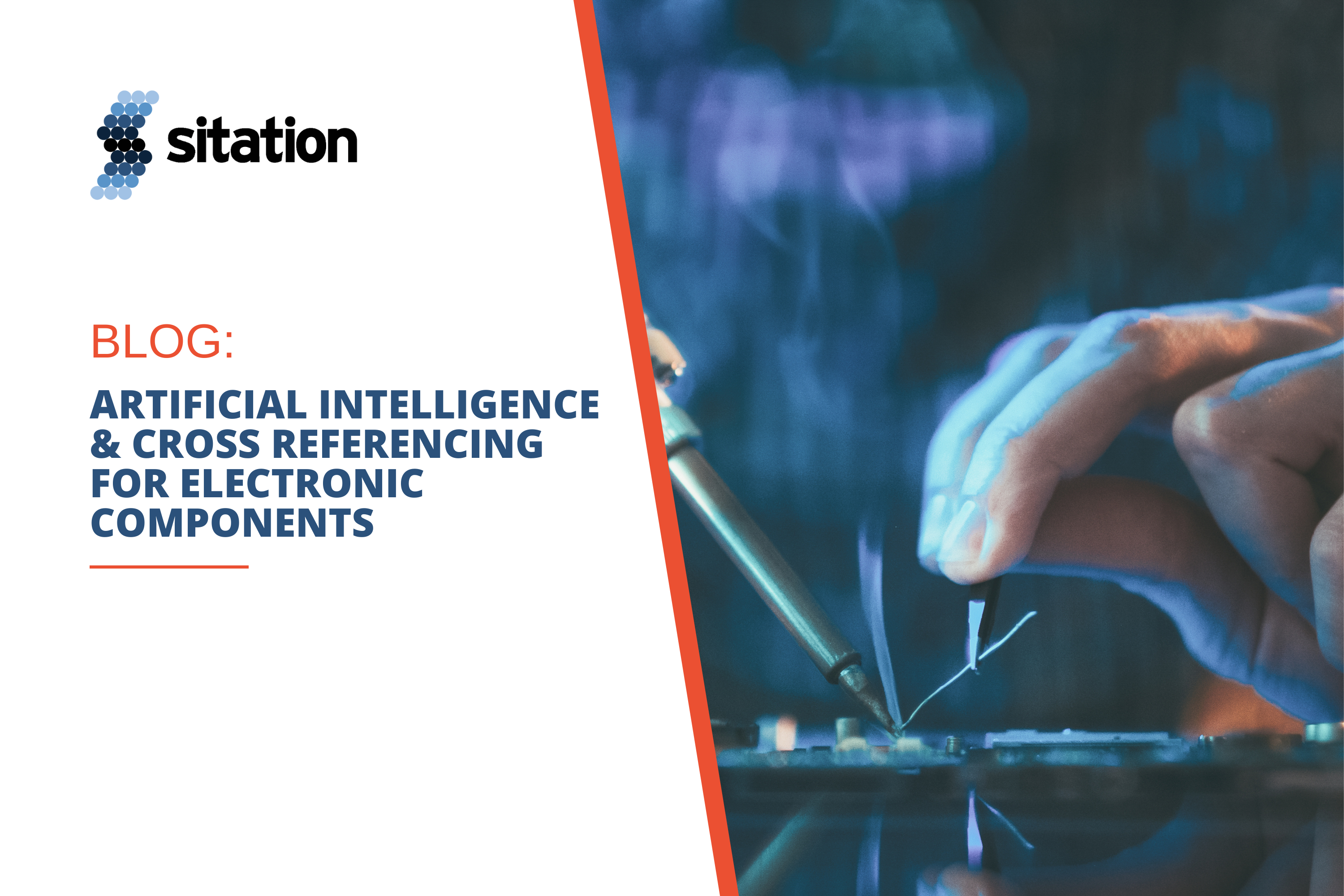Please enjoy this exploration in to the value of Artificial Intelligence and cross referencing for the electronic components industry. Pramit Rajkrishna, Director of Solution Consulting shares his insight from both this role at Sitation but also from his high tech industry experience.
Artificial Intelligence (AI) is making a significant impact across various industries, and the electronic components sector is no exception. With the emergence of Large Language Models such as ChatGPT and exploration across various industries in integrating AI capabilities to automate, accelerate and solve business use cases at scale.
Cross-referencing in PIM systems is crucial for ensuring seamless interchangeability between different parts and components. However, due to the sheer volume and complexity of data, manual cross-referencing can be time-consuming and prone to errors. AI can help automate and optimize this process.
Given the importance of cross referencing in the electronic components and high-tech manufacturing and distribution space and management of this information in Product Information Management (PIM) systems, it is a natural extension of leveraging AI capabilities to solve for cross reference management at scale within Product Information Management (PIM) systems.
How Can Artificial Intelligence Help?
Cross Reference Data Collection and Integration
AI can automate the process of data collection and integration, pulling information from a wide range of sources such as supplier catalogs, product datasheets, and manufacturer websites. AI and Machine learning algorithms can identify patterns, extract relevant information, and organize it in a standardized format. This reduces the time and effort required to gather and integrate data and enhances the accuracy of cross-referencing.
Data Cleaning and Validation
AI can be used to validate and clean cross-reference data. AI algorithms can spot anomalies, inconsistencies, or duplicates in the data, and either correct them automatically or flag them for review. This ensures the accuracy and reliability of cross-reference data. Automated data cleansing at scale is one of the key use cases and major challenges of cross reference management.
Predictive Analytics
Machine learning, a subset of AI, can analyze cross-reference data and make predictions about future trends. For example, it could predict potential component shortages, helping procurement teams to plan accordingly. It can also suggest alternative components based on factors like price, availability, and compatibility.
Natural Language Processing (NLP)
NLP, another subset of AI, can be used to understand and analyze textual data in product specifications, customer reviews, and other unstructured data. This can be used to improve cross-referencing by understanding the context and meaning of words and phrases, thus enhancing the search and match capabilities of the PIM system.
Automated Cross-Referencing
AI can automate the process of creating and managing cross-references. Machine learning algorithms can learn from past data to identify equivalent or substitute components, creating links between them. This not only saves time but also improves the accuracy and comprehensiveness of cross-referencing.
User Experience Enhancement
AI can enhance user experience by providing personalized recommendations based on past behavior or preferences. For example, it could suggest alternative components based on a user’s previous selections, making the process of finding and selecting components more efficient. This is very valuable in the context of user persona preferences for cross references for B2B and B2C customers.
Security Enhancement
AI can also enhance the security of cross referencing data. Machine learning algorithms can identify unusual patterns of behavior that might indicate a security breach, allowing for early detection and prevention. In addition, algorithms can be used to partition recommendations for general vs special purpose cross references to maintain partitioning based on sensitive industries such as military or healthcare applications.
To fully leverage AI in cross-referencing for the electronic components industry, part manufacturers and distributors need to invest in the right tools and technologies, ensure data quality, and provide training to users. While AI can significantly enhance cross-referencing capabilities, human oversight and expertise are still crucial to manage exceptions, ensure data security, and make strategic decisions as a last mile capability to ensure accuracy of cross references and associated governance.
If you are interested in leveraging AI to advance your data management processes, contact us.





